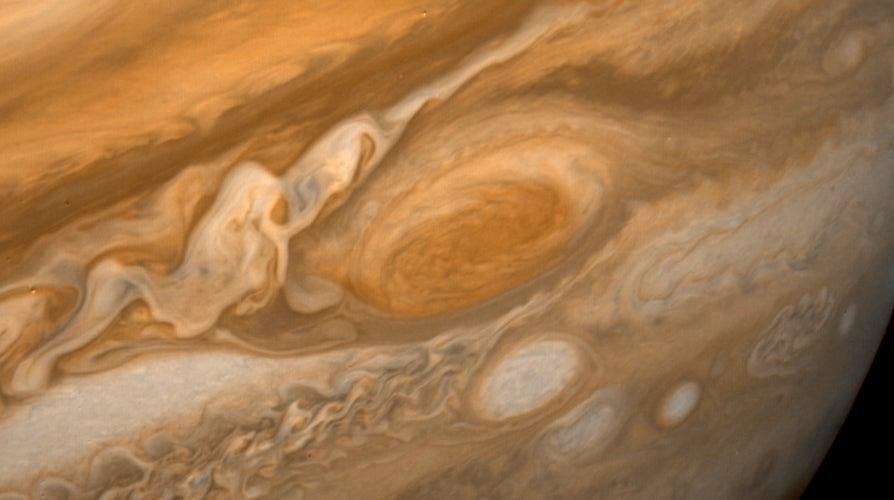NASA’s Hubble Space Telescope keeps an eye on Jupiter’s Great Red Spot, a 16,093 km-wide storm system that has been swirling for at least 190 years and possibly much longer. Recent data from the telescope indicates that the spot’s outer winds have picked up speed in the past decade.
The storm has an “outer lane” and an “inner lane” of winds, both of which rotate counterclockwise. While the outer lane has sped up recently, the winds closer to the centre of the spot were actually moving much slower in 2020 than they were back in 2009. The research exploring these wind trends was published last month in the Astrophysical Journal Letters.
“Since we don’t have a storm chaser plane at Jupiter, we can’t continuously measure the winds on site,” said Amy Simon, a planetary scientist at NASA’s Goddard Space Flight Centre, in a NASA press release. “Hubble is the only telescope that has the kind of temporal coverage and spatial resolution that can capture Jupiter’s winds in this detail.”
The pickup in wind speed was steady: less than a 3 km-per-hour change per Earth year from 2009 to 2020. It’s only because the team had 11 years of Hubble data, and that Hubble can see Jupiter with such precision, that they could pick out the trend. The winds are blowing at around 644 km per hour, slightly slower than the cruising speed of a commercial airliner.

Though Jupiter appears serene in images — a big marble in space — the planet is a turbid ball of gas that is constantly moving. Just last year, an entire new spot popped up on the planet. And for all its fame, even the Great Red Spot is something of an enigma; our modern instruments can’t probe much of the storm besides what happens on the surface.
“Hubble can’t see the bottom of the storm very well. Anything below the cloud tops is invisible in the data,” said Michael Wong, a planetary scientist specializing in atmospheres at the University of California at Berkeley, and the paper’s lead author, in the same release. Wong added that the recent trend is “an interesting piece of data that can help us understand what’s fuelling the Great Red Spot and how it’s maintaining energy.”

Planetary scientists do know some things about the spot. It has a tiered structure in which the storm’s higher clouds are toward the centre, and the outer edges of the storm are deeper in the planet. The storm is slowly becoming more circular compared to the oval it’s long been.
The storm has been observed for nearly 200 years — maybe even 350 years, as it’s hard to say whether spots described by earlier astronomers were one and the same as the Great Red Spot — but it’ll likely take more time and better instruments to dig deeper into the tempestuous mystery at Jupiter’s heart.
